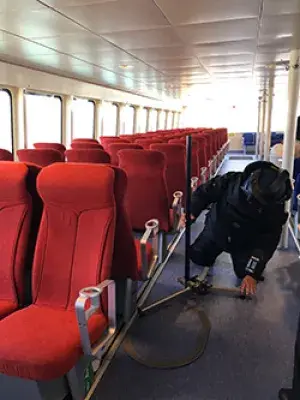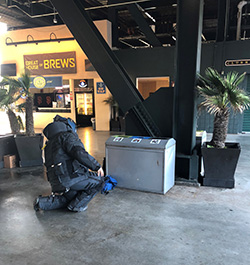
TSA explosives experts joined forces to host a two-day bomb exercise in San Francisco with the goal of protecting the Bay Area’s transportation systems. Transportation Security Specialists (TSSs) specializing in explosives from San Francisco, Los Angeles, Burbank, San Jose and Oakland, California as well as Indianapolis led the drills, with bomb squads from seven area police and sheriff’s departments participating.
“These exercises are designed to provide public safety and military bomb technicians the opportunity to operate in the cramped, awkward environment of transportation systems,” said San Francisco International Airport (SFO) TSS Christopher Taylor. “Drill locations included the TSA SFO baggage inspection room, the Air Train at SFO, the Golden Gate Ferry and Oracle Park, the home of the San Francisco Giants.”
The training was part of TSA’s Bomb Squad Response to Transportation Systems, which is routinely carried out at transportation venues across the country and included a series of demonstrations and realistic practical exercises with hands-on scenarios. “This gave bomb squads the opportunity to train in transportation and c

During the two-day training, TSA mirrored scenarios based on recent bombing incidents. These included the 2018 Cozumel ferry explosion in Mexico; the 2017 Australian airplane bomb plot; the 2017 Manchester Arena bombing at the Ariana Grande concert in Manchester, United Kingdom; and the 2017 Parsons Green train bombing in London.
“These exercises provided an excellent opportunity for bomb squads to train in real world scenarios at locations routinely seen as “soft” targets by an adversary,” Taylor said. “The whole idea is to save lives, mitigate damage, and minimize disruption to transportation systems after a possible attack while reducing the economic impact.”
